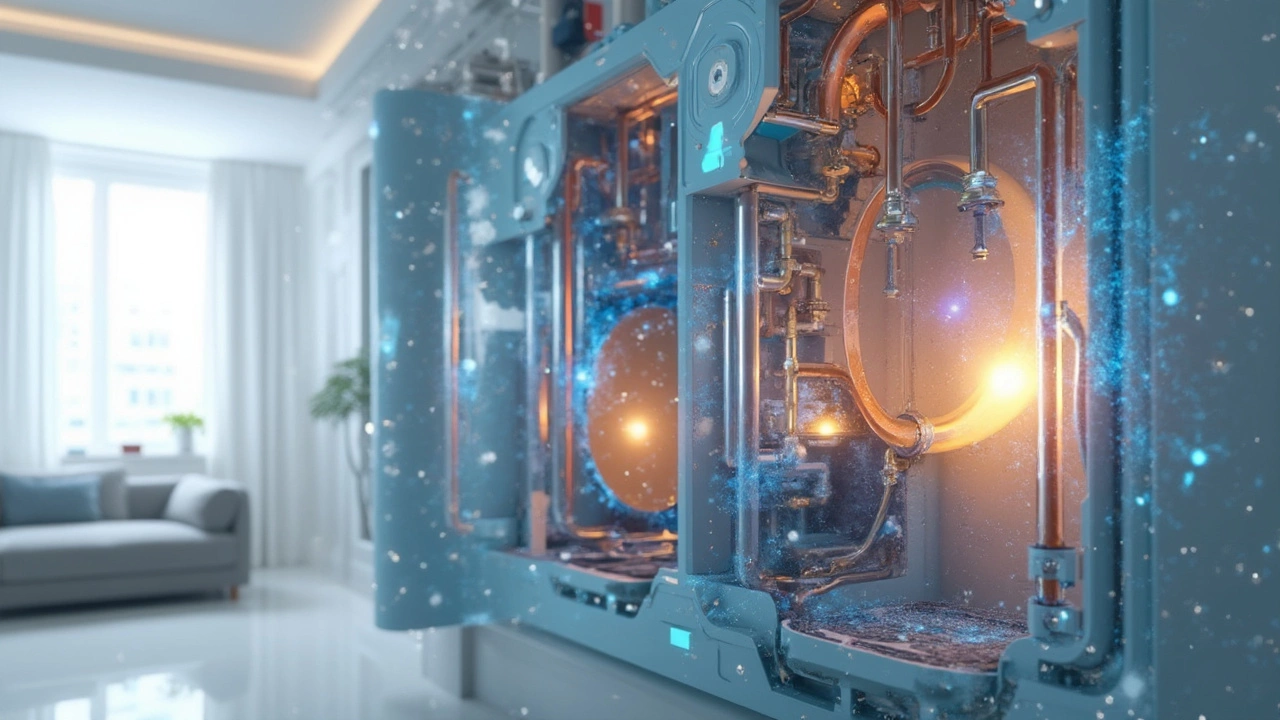Ever found a mysterious puddle around your water heater and wondered where it's all coming from? You're not alone. Water heaters, those silent workhorses of comfort in our homes, can sometimes spring a leak. But where?
Most leaks start at a few usual suspects. The pressure relief valve often leads the pack. Positioned at the top or side, it's designed to release water when things get a bit too steamy inside. However, if it's continuously dripping, that might mean too much pressure or a faulty valve.
Another common troublemaker is the drain valve at the bottom. It's there to help flush out sediment, but a worn-out valve can lead to frustrating drips. Keeping an eye on these spots can prevent a surprise cold shower!
Common Leak Points
When it comes to water heater leaks, some spots are more prone to problems than others. Recognizing these common leak points can help you diagnose issues faster and keep your water heater functioning smoothly.
Temperature and Pressure Relief Valve
This device is a crucial safety feature, designed to release pressure if your water heater becomes a ticking time bomb. However, if it starts leaking, it could mean the pressure inside is too high. A frequent mistake is over-tightening the valve, which can cause leaks. According to the American Water Works Association, "Regular checks of your relief valve can prevent catastrophic failure."
Drain Valve
Located at the bottom of the tank, the drain valve allows you to empty the tank for maintenance or replacement. Over time, sediment can build up, causing the valve to leak. If you spot a trickle here, it's likely time to replace the valve.
Inlet and Outlet Connections
Water comes into your heater through the inlet pipe and leaves through the outlet. Over time, these connections can become loose or corroded, resulting in leaks. Tightening or replacing faulty connections can often remedy the situation quickly.
The Tank Itself
Unfortunately, leaks can also stem from the tank. If corrosion has made a spot in the metal shell, you're in for an expensive replacement. Tanks generally last about 10-15 years; once they hit this range, it's wise to keep an eye out for signs of rust and corrosion.
| Leak Point | Cause |
|---|---|
| Pressure Valve | Excess pressure or faulty valve |
| Drain Valve | Sediment build-up |
| Connections | Loose or corroded joints |
| Tank | Corrosion and age |
Addressing these common leak points early can prevent further damage and keep your water heater in top shape. So next time you see a mysterious puddle, you'll know exactly where to start your hunt.
Causes of Leaks
Water heaters, although sturdy, aren't immune to the wear and tear that creeps up over the years. A number of usual suspects could be behind your water heater leak, and knowing them can help you act fast.
Corrosion
One of the biggest culprits of leaks is corrosion. Over time, rust eats away at the tank, leaving weak spots that can eventually crack open. Those aged water heaters are more prone to this fate, especially if they've been neglected in terms of maintenance.
High Pressure
Sometimes, it's all about the pressure. When the water heater is set too high or there's excessive external water pressure, the tank can get stressed. This is where our friend, the pressure relief valve, steps in. But if it's faulty, excess pressure might find other less desirable escape routes.
Faulty Components
Beyond the physical tank, several smaller parts can lead to leaks. The temperature and pressure relief valve can malfunction, or drain valves can wear out. Pipes connecting the heater can also spring leaks if they become damaged.
Sediment Buildup
Years of operation can leave sediment at the bottom of your tank. If not cleaned out, this sediment causes the tank to overheat, ruin the lining, and eventually crack, resulting in leaks.
Incomplete Installation
Errors during installation could also be to blame. Loose connections or improper sealing of the tank's joints might not immediately cause issues, but could develop leaks over time.
Being proactive and tackling these problems when they appear can save you a lot of hassle, not to mention prevent an untimely cold shower.

Preventive Measures
Let's be real — no one likes waking up to a leaky water heater. The hassle, potential damage, and repair costs aren't anyone's idea of fun. But what if you could reduce the chances of a leak significantly? Well, you're in luck, because a little preventative care can go a long way.
Regular Inspections
Spotting an issue early can save you a bucket load of trouble. Make it a habit to visually inspect your water heater every few months. Look at all the common leak points like the pressure relief valve and drain valve. If you notice any rust or moisture, it's time to take action.
Flushing the Tank
Over time, sediment can build up in the tank, which can lead to corrosion and leaks. To keep your tank running smoothly, you should flush it once a year. It's simple, really:
- Turn off the power and cold-water supply.
- Attach a hose to the drain valve and direct it to a safe spot.
- Open the valve and let it drain.
- Close the valve, remove the hose, and turn the power and water back on.
This little ritual helps clear out the gunk and keeps your water heater in good shape.
Check the Anode Rod
The anode rod plays a crucial role in preventing leaks by attracting corrosive elements in the water. Over time, it wears down. Checking it annually is wise. If it's less than half an inch thick or coated in calcium, it's time for a replacement.
Temperature and Pressure Settings
Both high temperature and excessive pressure can strain your system. Set the thermostat to around 120 degrees Fahrenheit. Regularly check the pressure relief valve to ensure it functions properly.
By keeping an eye on these factors, you can extend the lifespan of your water heater and avoid the drama of last-minute repairs. The right maintenance measures not only prevent leaks but also foster an efficient water heating system.
When to Call a Pro
Deciding whether to handle a water heater repair yourself or call in a pro can be a head-scratcher. While some fixes might be within reach for a seasoned DIYer, others scream for expert attention.
Signals It's Time to Pick Up the Phone
First off, if the water heater leak seems to come from the tank itself, that's a clear sign to call a pro. Tanks that leak often also mean there's corrosion inside, and patchwork repairs are just band-aids on the problem. Professionals will help decide whether a repair or full replacement is necessary.
Also, if you've got inconsistent hot water, or if the water is discolored, you might be dealing with sediment buildup or a failing anode rod. An expert will have just the right tools and know-how to clear things up and keep your heater running smoothly.
How Severe Is the Leak?
If water leaks are becoming a regular sight in your basement or utility room, it could be more than just a nuisance. In some cases, they indicate bigger plumbing issues lurking within your home's system. An experienced plumber will get to the root of the problem, checking connections and valves beyond just the heater itself.
- Increased frequency of puddles? Time to call.
- Sounds of popping or cracking? It might be more serious than you think.
Safety First
Let's not forget about safety. A water heater contains electrical components and hot water. An unexpected mix of electricity and water equals trouble, not to mention the risk of burns from handling hot water valves. When it comes to your safety and the safety of your home, professionals are your best bet.
If you're ever in doubt, reaching out to a plumber doesn't just save time—it can prevent costly mistakes. It's all about knowing when to tackle that leak solo and when to let the experts step in. Sometimes a quick call is all it takes to get back to hot showers and peace of mind.
